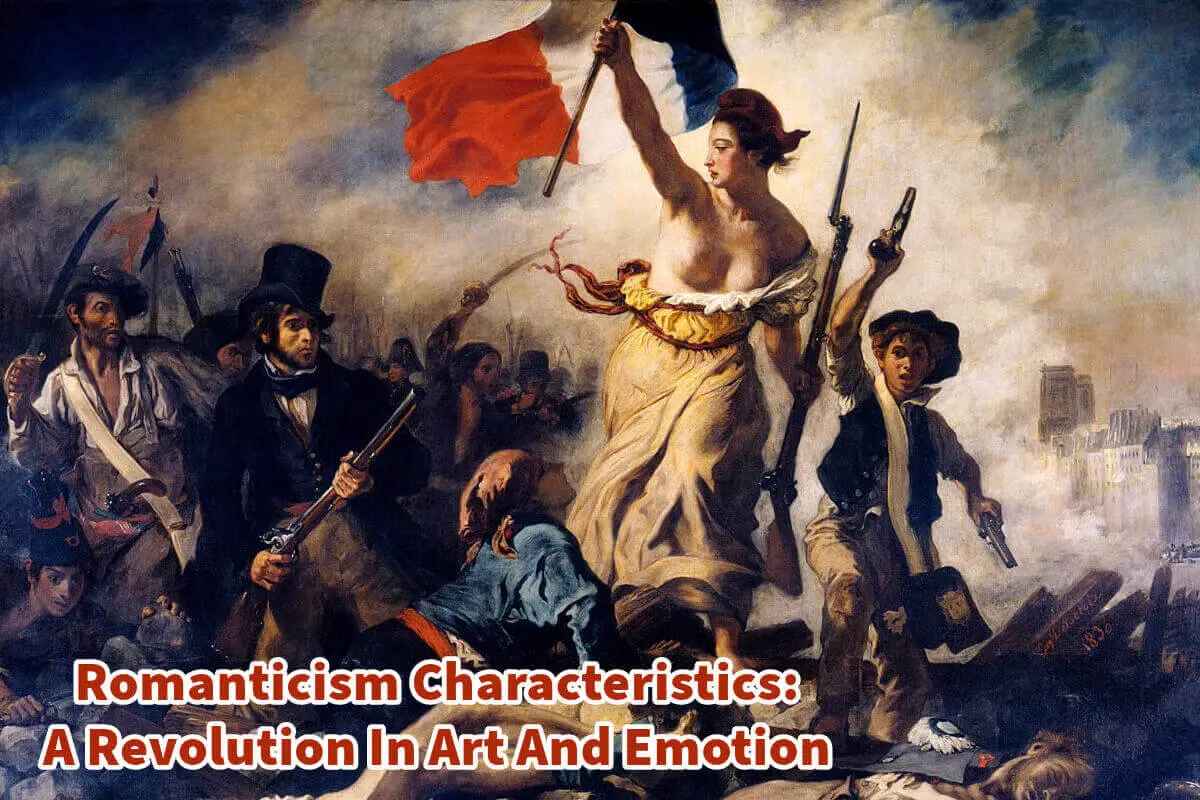Romanticism, a dynamic and impactful art movement, arose in opposition to the Enlightenment’s rationalism and classical standards.
Romanticism’s characteristics span from the late 18th century to the mid-19th century, primarily across Europe; it marked a significant historical period and a perpetual tribute to the strength of emotion and creativity in art.
Table of Contents
- Romanticism: A Revolution In Art And Emotion
- Top 10 Romantic Artists And Their Works
- Discovering More About Romantic Art
- Related Questions
Romanticism: A Revolution In Art And Emotion
Romanticism, a vibrant and influential art movement, emerged as a reaction against the rationalism and classical norms of the Enlightenment era. It flourished from the late 18th century to the mid-19th century, primarily in Europe.
This movement is a historical milestone and a living testament to the power of emotion and imagination in art.
The Essence Of Romanticism
At its core, Romanticism championed individualism, emotion, and the sublime beauty of nature. It was a revolt against the scientific rationalization of nature and the rigid structures of Neoclassicism, emphasizing intense emotional expression and freedom.
Historical Context
The Romantic era spanned approximately from 1800 to 1850, flourishing mainly in Europe against the backdrop of the French Revolution and the Industrial Revolution. These tumultuous times have fueled the Romantic ideal of individual revolution and glorifying the past and nature.
Why Romanticism Matters
Romanticism matters because it represents a fundamental shift in how art was perceived and created. It prioritized emotion over reason, the subjective over the objective, and the imaginative over the factual. This paved the way for modern artistic expressions and reshaped cultural perspectives.
Top 10 Romantic Artists And Their Works
Romanticism artists are celebrated for their pioneering contributions to the Romantic movement, each bringing a unique perspective that encapsulated the era’s defining characteristics: a deep fascination with nature, the exaltation of emotion and individualism, and a keen interest in the sublime and the spiritual.
Their artworks define the Romantic era and continue influencing and inspiring today’s art world.
Caspar David Friedrich (1774–1840):
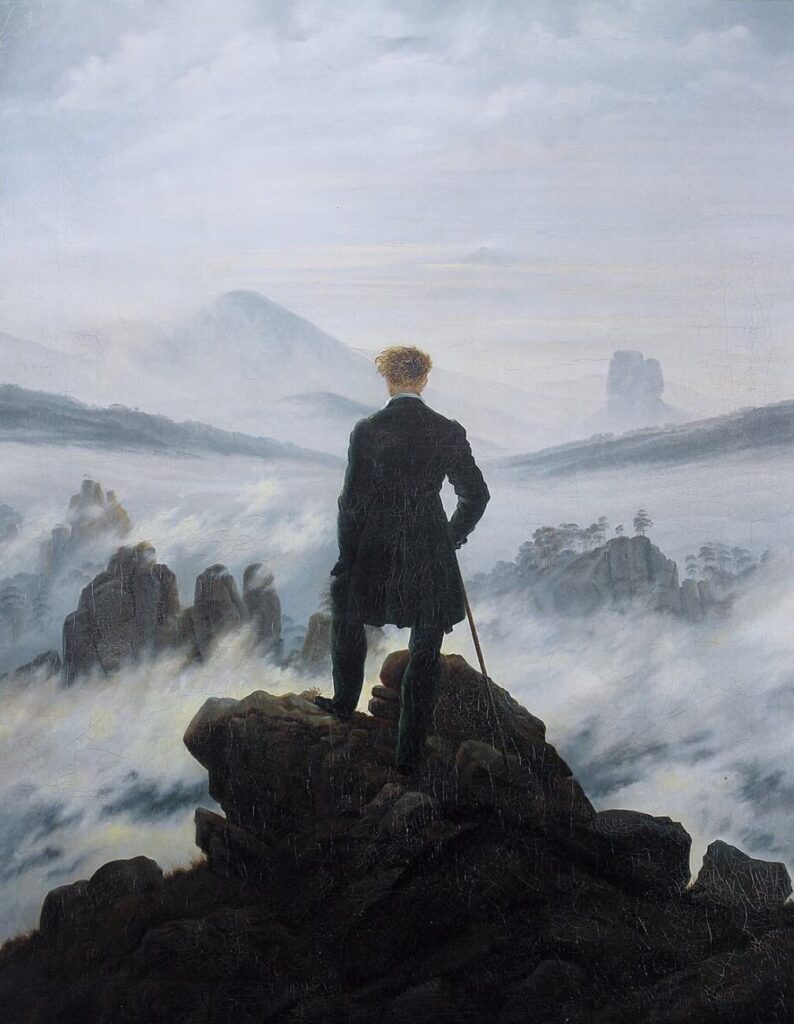
Friedrich’s “Wanderer above the Sea of Fog” (1818) is an iconic Romantic masterpiece. This painting, depicting a lone figure amidst a mountainous landscape shrouded in mist, captures the Romantic themes of man’s contemplation of nature and the sublime.
William Turner (1775–1851):
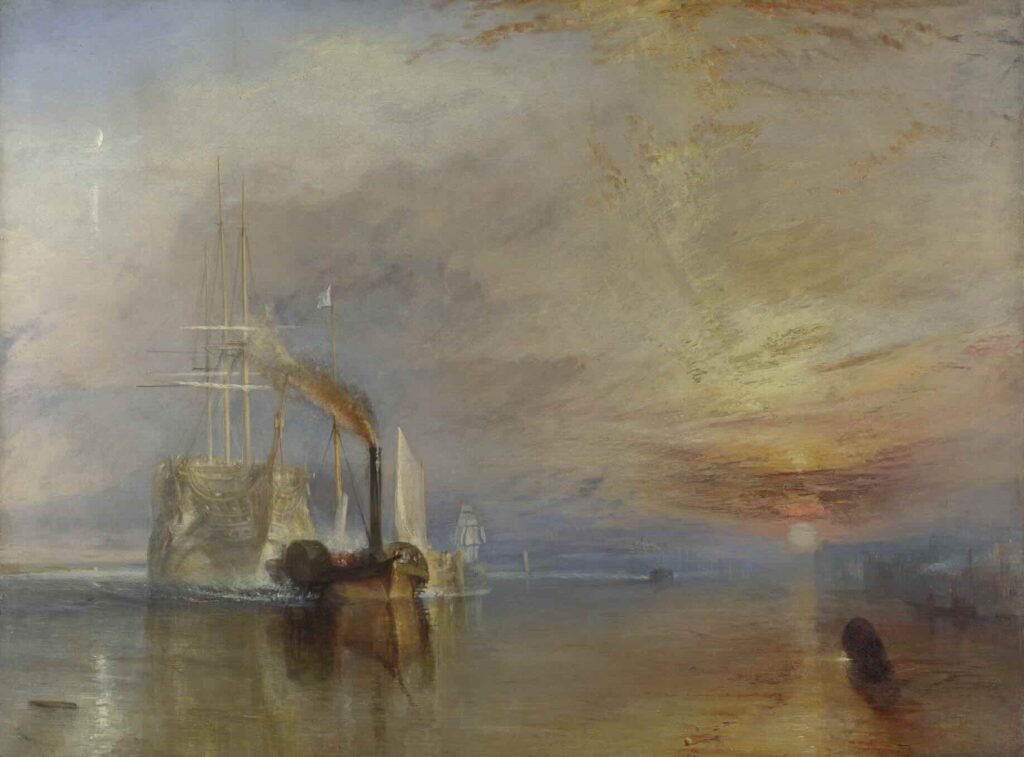
In “The Fighting Temeraire” (1839), Turner presents the ghostly image of a warship being towed to its final berth. The work is renowned for its poignant reflection on the passing of an era and the use of light and color to evoke emotion.
Eugène Delacroix (1798–1863):
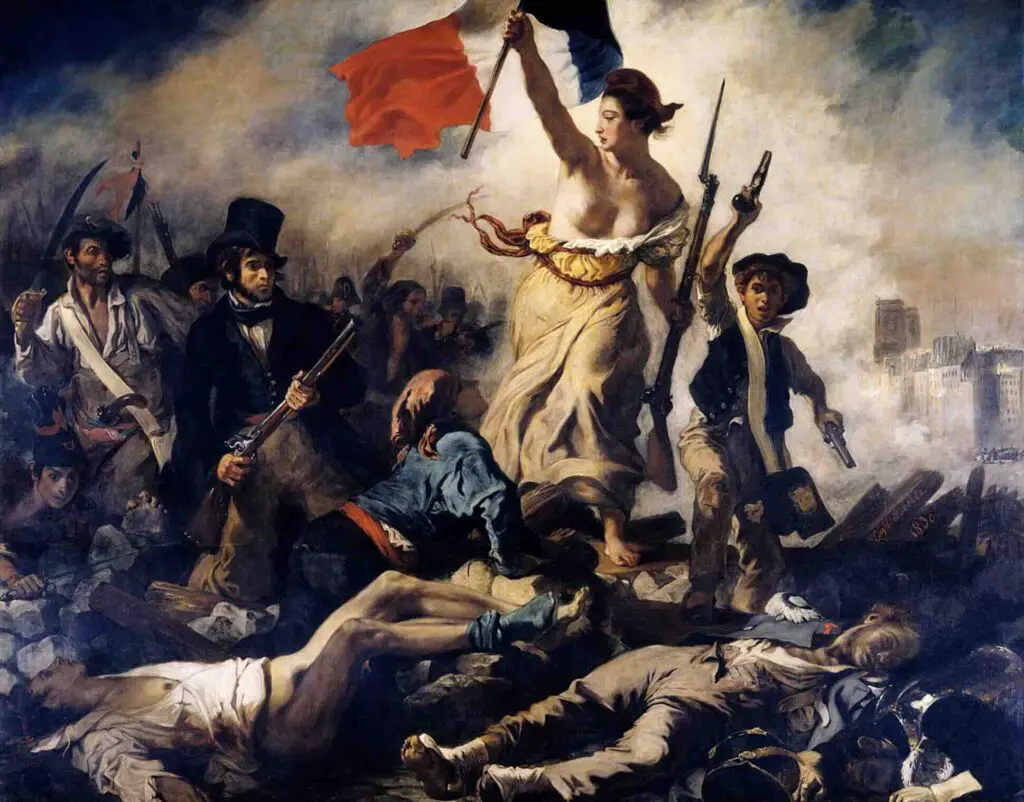
Delacroix’s “Liberty Leading the People” (1830) is a defining image of the Romantic period. This dramatic scene of revolution conveys intense emotion and movement, symbolizing the struggle for freedom.
John Constable (1776–1837):

“The Hay Wain” (1821) is a quintessential English landscape painting. It illustrates Constable’s love for the natural world and his ability to capture the essence and beauty of the countryside he knew intimately.
Francisco Goya (1746–1828):
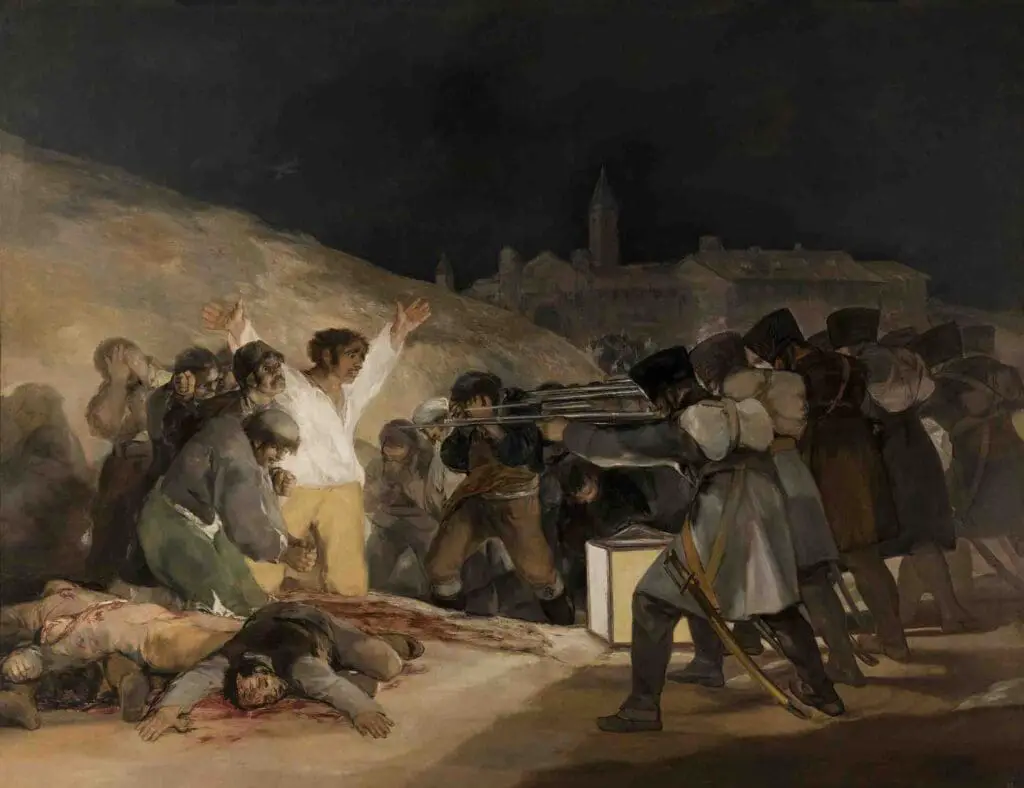
Francisco Goya’s “The Third of May 1808” (1814) offers a raw, vibrant depiction of the Spanish resistance to Napoleon’s armies. It’s a stark portrayal of the brutality of war and a powerful political statement.
Samuel Palmer (1805–1881):
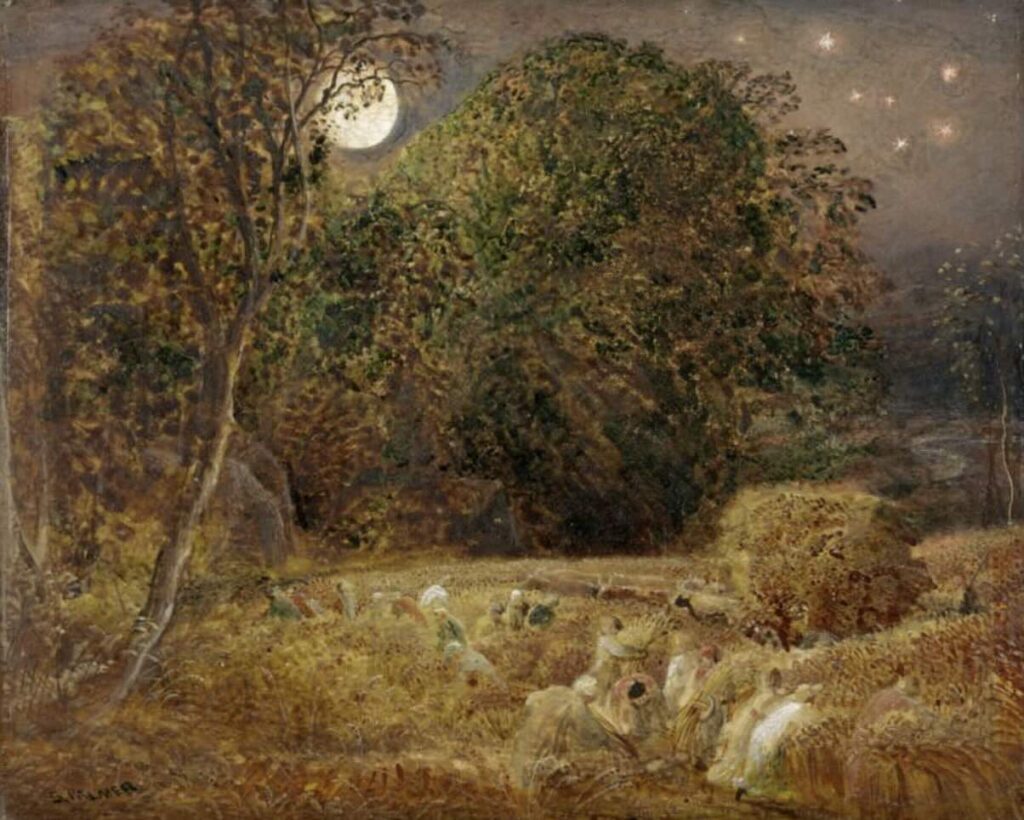
Samuel. Palmer’s “The Harvest Moon” (1833) demonstrates Palmer’s mystical approach to landscapes. His work often features a combination of the pastoral with a rich, almost dreamlike quality.
Théodore Géricault (1791–1824):
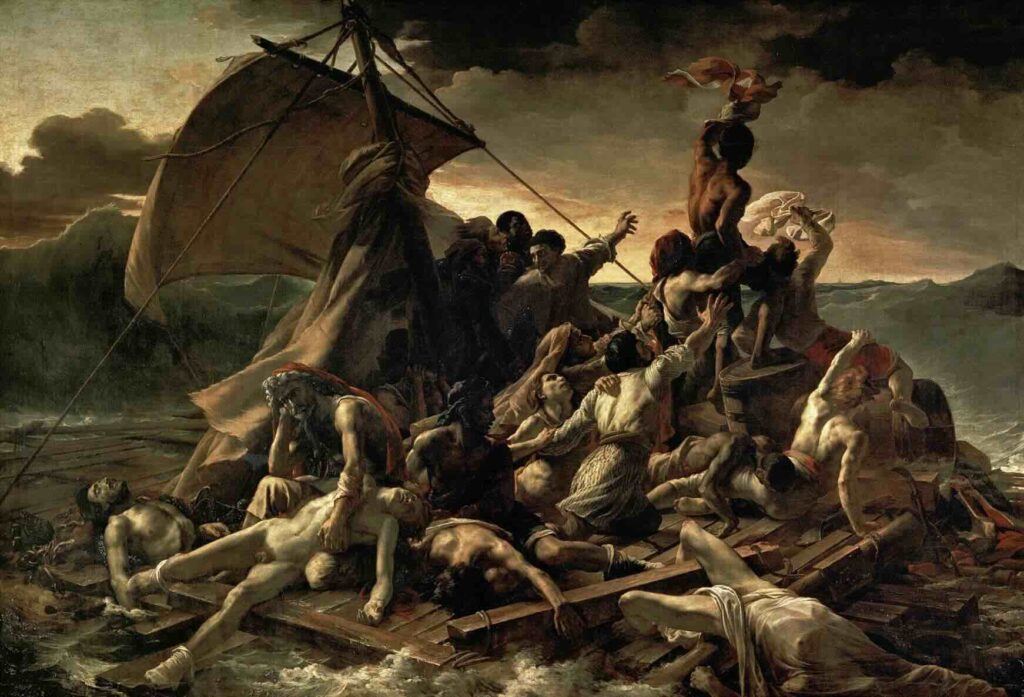
Theodore Gericault’s “The Raft of the Medusa” (1818–1819) is a monumental piece capturing the aftermath of a contemporary French shipwreck. Géricault’s focus on the plight and agony of the survivors marked a shift towards themes of human suffering and endurance.
Henry Fuseli (1741–1825):
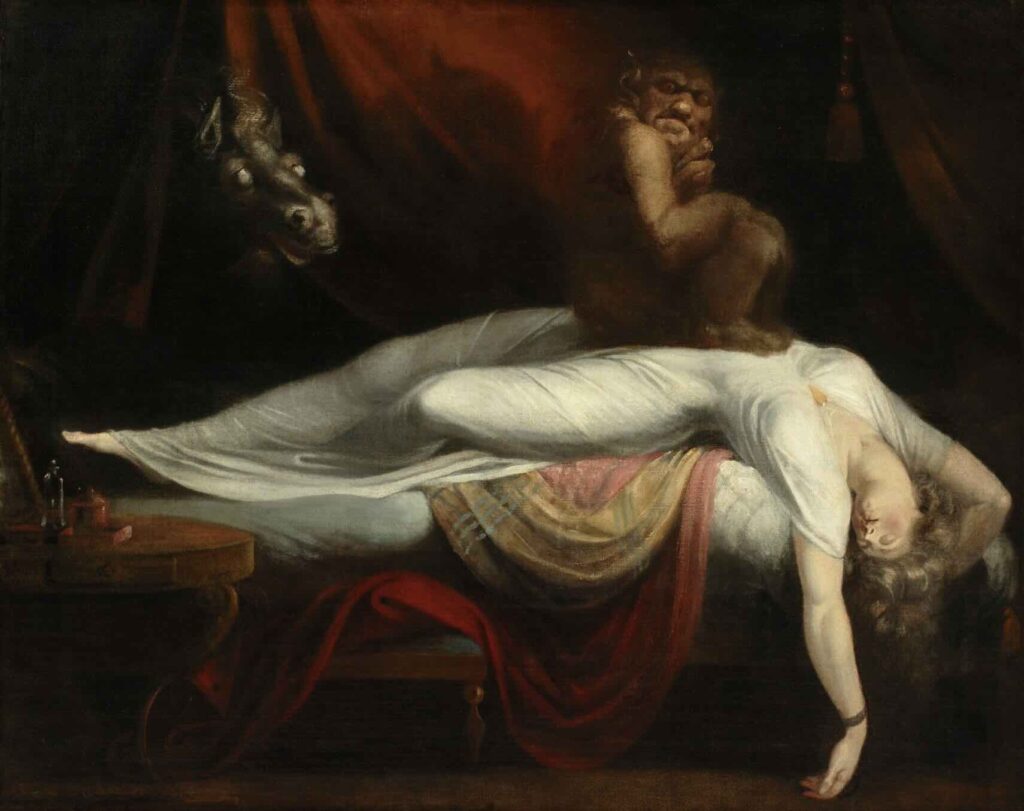
Henry Fuseli’s painting “The Nightmare” (1781) delves into the subconscious realm. This dramatic, eerie scene captures the essence of the Gothic and the supernatural, popular themes in Romantic literature and art.
J.M.W. Turner (1775–1851):

J. M. W. Turner’s “Rain, Steam and Speed – The Great Western Railway” (1844) depicts an early British train crossing a bridge. The painting is notable for its groundbreaking portrayal of modern technology enveloped in the sublime forces of nature.
Philipp Otto Runge (1777–1810):

Philipp Otto Runge’s “Morning” (1808) is part of a series that explores Christian and mythological themes, focusing on color symbolism and the unity of humans and nature. His work is considered a precursor to the Symbolist movement.
Discovering More About Romantic Art
To further understand Romanticism, it’s essential to explore its diverse themes: emphasizing intense emotion, glorifying the past and nature, and exploring nationalism and exoticism.
Romantic art often depicted heroic individuals’ historical and natural landscapes and had a penchant for the mysterious and fantastical.
Romanticism was not just an artistic movement; it was a cultural revolution. It challenged the status quo, reshaped aesthetics, and continues to influence modern art. Understanding Romanticism is to appreciate the depth and breadth of human emotion and the endless potential of imaginative expression.
Anita Louise Art is dedicated to art education, great artists, and inspiring others to find and create their art. We love art that uplifts and inspires. #ArtToMakeYouSmile! #ArtToMakeYouHappy!
If you are interested to see any of my art, you can find out more by clicking here. If you are interested in what inspires me and my paintings, you can discover more by clicking here.
We have a free newsletter and would love you to be part of our community; you can subscribe to the newsletter by clicking here. If you have any questions, I would be happy to talk to you at any time. You can reach me, Anita, by clicking here.
Subscribe to our Anita Louise Art YouTube Channel filled with great videos and information by clicking here.
Join us for our podcast “5 Minutes With Art.” Spend just 5 minutes a week with us to discover and learn about great art and artists. You can find out more about our podcast by clicking here.
Related Questions
Why Was Impressionism Art At First Rejected?
During the emergence of impressionism art, fine art oil painting was an essential addition to interior design, especially for the affluent and the increasing arrival of the middle classes. For these art patrons, only some particular art styles were considered acceptable for them to use for the interior design of their home, and impressionism art did not fit into any of these culturally acceptable fine art categories.
By clicking here, you can learn more by reading Why Was Impressionism Art at First Rejected?
Similarities of Expressionism And Impressionism Art And Their Differences
Impressionism and Expressionism art movements started in Europe, but the impressionism movement started before the Expression art movement. Each movement has different looks of art which are distinguishable from each other. Even though they are both different art movements, there are still some similarities between them.
By clicking here, you can learn more by reading Similarities of Expressionism and Impressionism Art And Their Differences.
What Does Japonisme Mean?
The term Japonisme is about the influence of Japanese art on European culture and arts. Most notably, the influence Japanese woodblock prints had on the Impression art movement. Many of the prominent artists from the Impressionism art movement were inspired by the Japanese Ukiyo-e woodblock print artists.
By clicking here, you can learn more by reading What Does Japonisme Mean?

